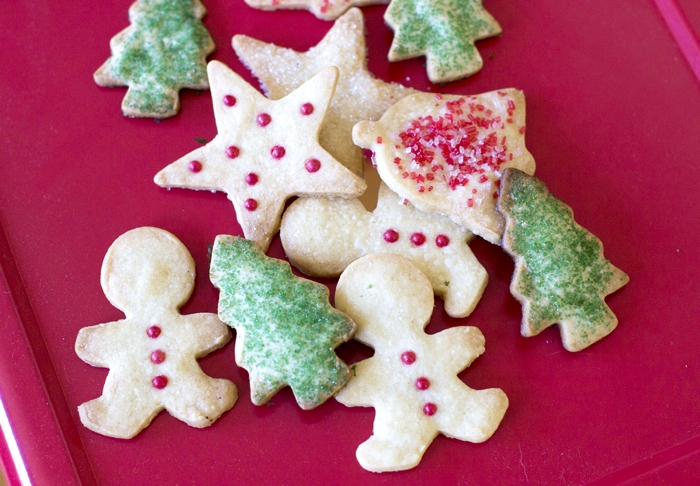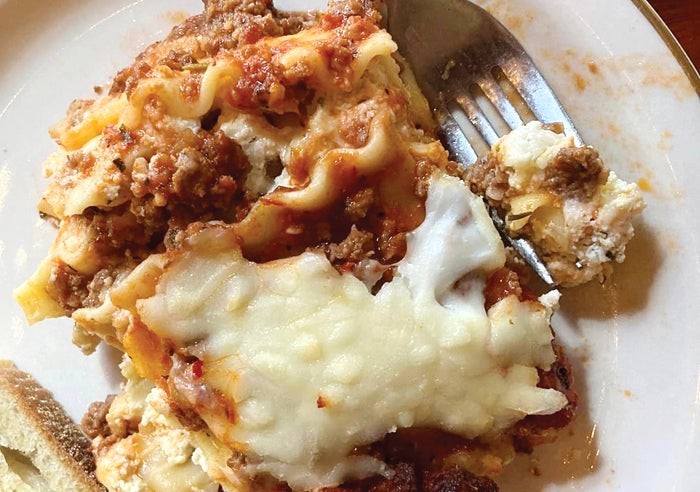Getting started on holiday cookies
Published 12:00 am Tuesday, December 2, 2014

- This photo shows foolproof holiday butter cookies in Concord, N.H. When it comes to holiday cookies, everything depends on the recipe and a few simple techniques. (AP Photo/Matthew Mead)
By Dorie Greenspan
Associated Press
Around the world, it’s time for holiday cookies: German springerles rolled out with patterned rolling pins; Dutch speculoos as tall as St. Nick and as intricately detailed as a stained glass window; internationally beloved gingerbread men, women, children and pets; and, of course, the icon of American holiday baking, the butter cookie, a cookie so satisfying we crave it all year long.
It’s a simple cookie, but when the holidays roll around, we bakers ask a lot of it: It’s got to hold its shape — no droopy Santas or stars without points. It’s got to welcome frosting, icing and sprinkles galore. It’s got to travel without mishap to Grandma’s and beyond. It’s got to keep well. And it’s got to look like a winner at the annual cookie swap. Wow!
When it comes to holiday cookies, everything depends on the recipe and a few simple techniques. Relax. I’ve got you covered this year. And I’ve broken it all down into delicious, bite-size chunks.
Flavor
My go-to recipe has very few ingredients, so each one counts, especially the butter. Butter provides most of the flavor and plays a big role in giving the cookies their crisp-on-the-outside and flaky-on-the-inside texture. Don’t even think about using margarine or shortening. And even though there’s just 1 teaspoon of vanilla in the dough, its flavor comes through, so be certain to use pure vanilla extract.
Mixing
The dough for these cookies is almost like French tart dough and, like almost all cookie recipes, it benefits from being mixed as briefly as possible once the flour goes in. There’s a lot of flour in this recipe — you need it for structure — so I like to mix the dough just until it forms moist clumps and curds. Then I turn it out onto the counter and, working with a small amount at a time, I smear each portion along the counter with the heel of my hand to complete the blending. In French, this technique is called fraisage, and it’s not only effective, but fun.
Rolling
The easiest way to roll this (and most other doughs) is to start as soon as it is mixed (a heresy in classic baking, but hey, it works). Work with half the dough at a time, placing it between two large sheets of kitchen parchment or waxed paper. Roll on both sides (your dough bakes more evenly when you do) and, from time to time, peel away the papers to be sure you’re not rolling them into the dough and creating creases. When you’re finished, keep the dough sandwiched between the papers.
Chilling
The freezer is your best friend when you’re working with a butter-rich dough. Chill the dough after rolling it and, if it gets soft after you’ve cut it, chill it again before baking.
Cutting
To get the cleanest shapes, be sure to use cutters with thin, sharp edges. Press down firmly on the cutter — don’t turn or jiggle —then carefully release the dough using your fingers to push it out of the cutter, if needed.
Baking
For an even bake and a super-easy clean-up, I like to line the baking sheets with parchment or silicone baking mats. Arrange the cookies 1 inch apart and bake in a heated oven until they are golden brown around the edges. Remember, color equals flavor. Leave the cookies on the sheet for a couple of minutes after they come out of the oven.
Cooling
Transfer the just-baked cookies to a rack and let them come to room temperature. I think of cooling as the last step in baking because cookies don’t develop their true texture until they’re cool. Also, you can’t decorate warm cookies, so just wait it out.
Storing
In order to maintain the texture of your cookies, always store crispy cookies with their crispy mates and chewy ones with other chewies. Mix them up and they all go soft lickety-split.
Foolproof Holiday Butter Cookies
Start to finish: 1 hour 45 minutes (45 minutes active)
Makes 40 cookies (2-inch cookies)
For the cookies
1 cup (2 sticks) unsalted butter, room temperature
1/2 cup (100 grams) sugar
1/2 teaspoon fine sea salt
1 teaspoon vanilla extract
2 1/2 cups (340 grams) all-purpose flour
Decorating sugar, for sprinkling (optional)
Working in the bowl of a stand mixer fitted with the paddle attachment, or in a large bowl with a hand mixer, beat the butter, sugar and salt together at medium speed until smooth and creamy, about 3 minutes. Reduce the speed to low and beat in the vanilla. Add the flour all at once and pulse the mixer on and off a few times to start blending it in.
With the mixer on the lowest speed, continue to mix in the flour, scraping the bowl as necessary, until you have what look like nuggets and curds. Turn the dough out onto a work surface and finish blending the dough by pulling off small hunks of it and pushing each hunk across the work table with the heel of your hand. Then gather the smooth dough into a ball, divide it in half and press each half into a disk.
Working with one piece of dough at a time, roll the dough between 2 sheets of kitchen parchment or waxed paper to a thickness of 1/8 inch. Slide the paper-sandwiched dough onto a baking sheet or cutting board (you can stack the pieces of dough) and freeze for at least 1 hour. At this stage, the also dough can be wrapped airtight and frozen for up to 2 months.
When you’re ready to bake, set a rack in the center of the oven and heat the oven to 350 F. Line a baking sheet with parchment or a silicone baking mat.
Remove 1 piece of dough from the freezer, remove the parchment from the dough and cut out cookies. As you cut them, place them on the lined baking sheet, about 1 inch apart. If you won’t be decorating the cookies, lightly sprinkle them with sugar. Save the scraps to combine with the scraps from the other piece of dough.
Bake for 11 to 13 minutes, or until the cookies are golden brown around the edges and on the bottoms. Transfer the baking sheet to a cooling rack, wait a couple of minutes, then lift the cookies off the sheet with an offset spatula and transfer to the rack to cool completely. Repeat with the remaining dough, cooling the baking sheet between batches. Gather any scraps together, reroll them, chill and make more cookies.
Nutrition information per serving: 80 calories; 40 calories from fat (50 percent of total calories); 4.5 g fat (3 g saturated; 0 g trans fats); 10 mg cholesterol; 8 g carbohydrate; 0 g fiber; 2 g sugar; 1 g protein; 30 mg sodium.
(Recipe adapted from Dorie Greenspan’s “Baking Chez Moi,” Houghton Mifflin Harcourt, 2014)
Dorie Greenspan is a James Beard award-winning cookbook author and an expert on baking and French cuisine. She has written 11 cookbooks, including her latest, “Baking Chez Moi: Recipes From My Paris Home to Your Home Anywhere.”






